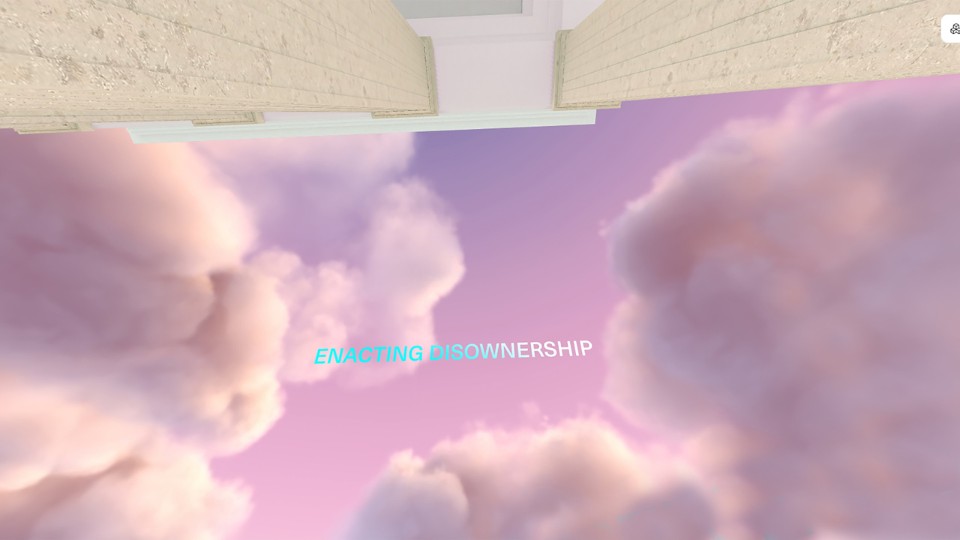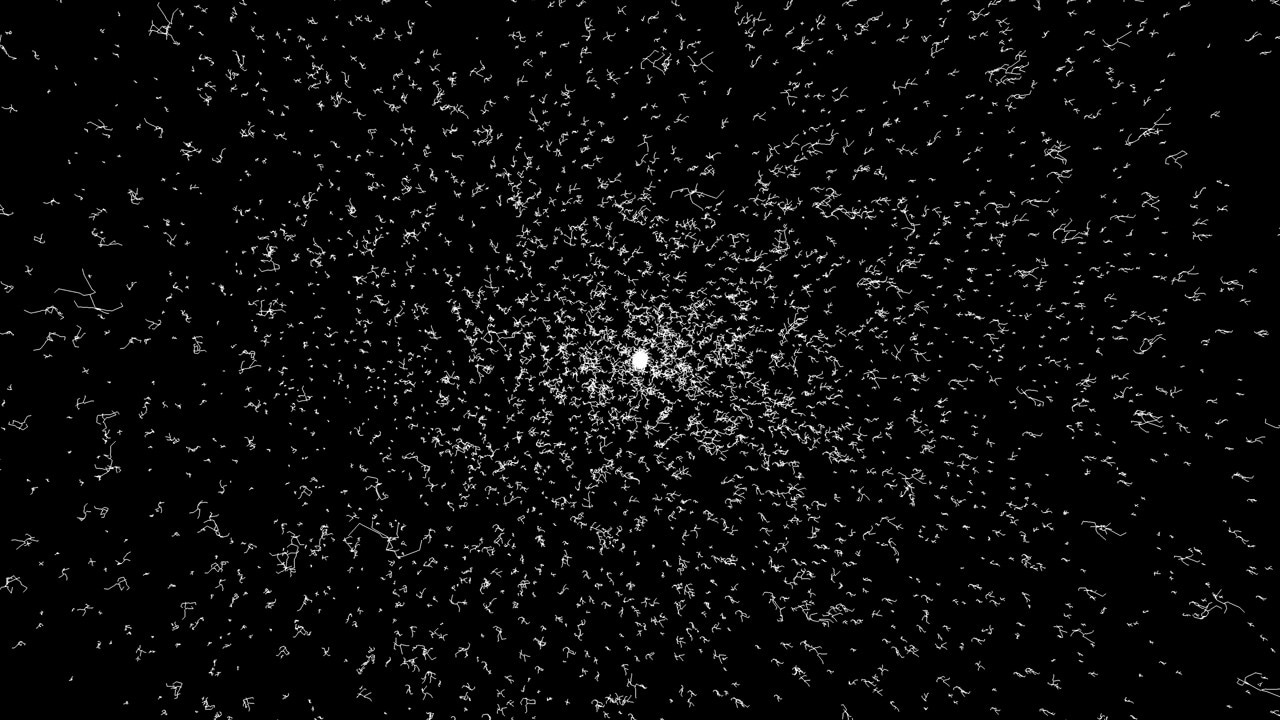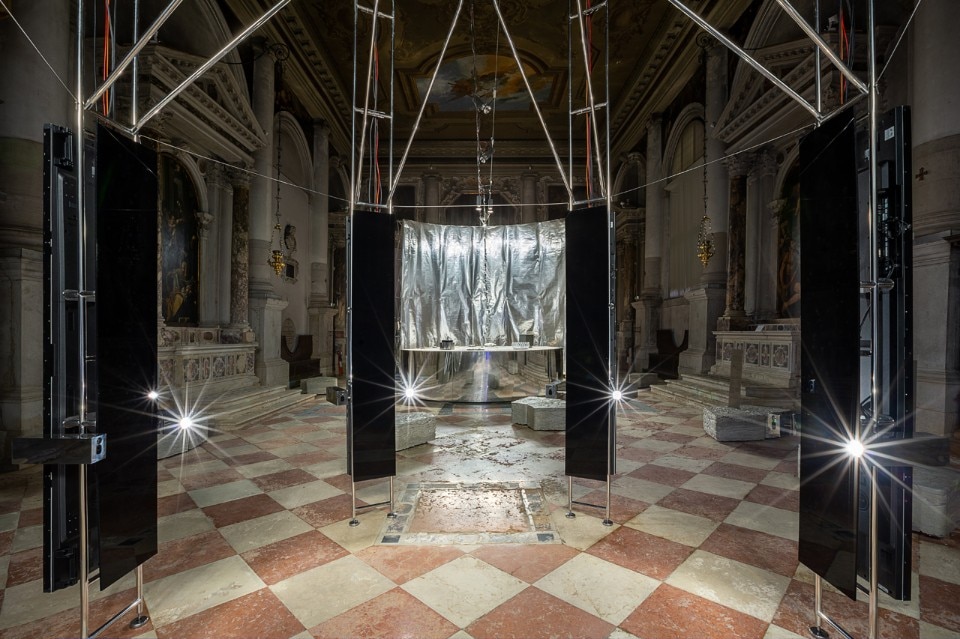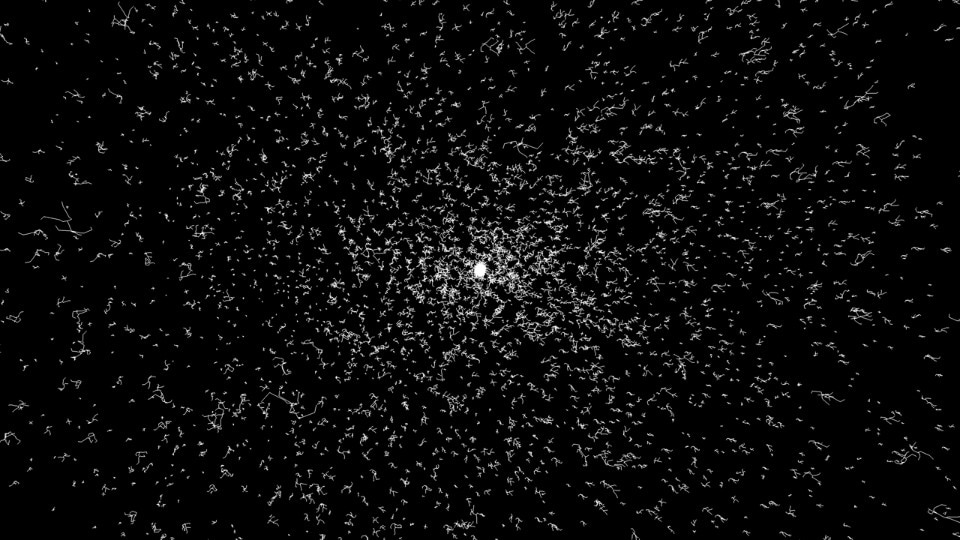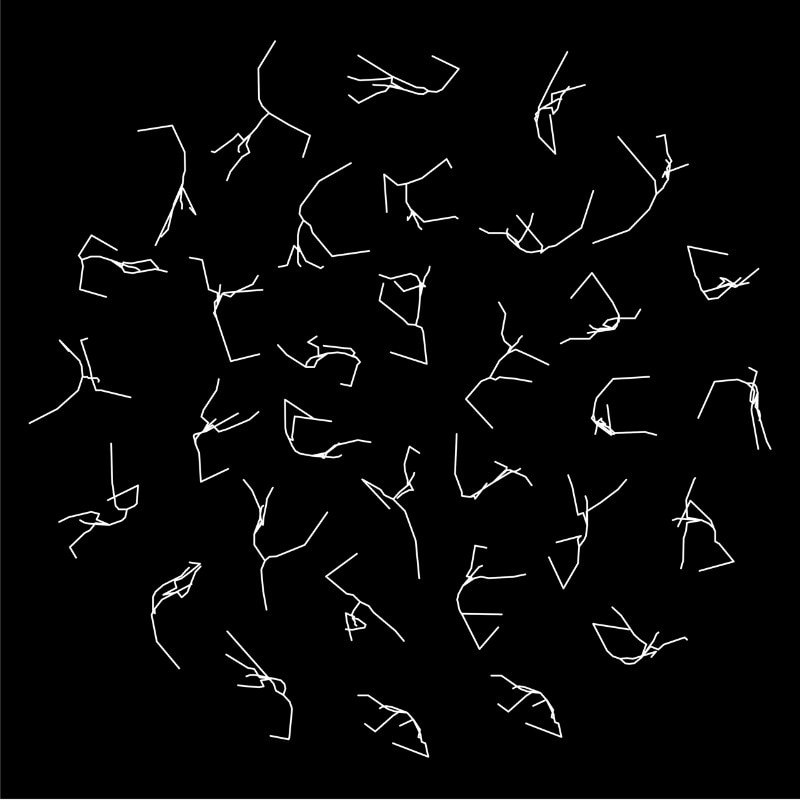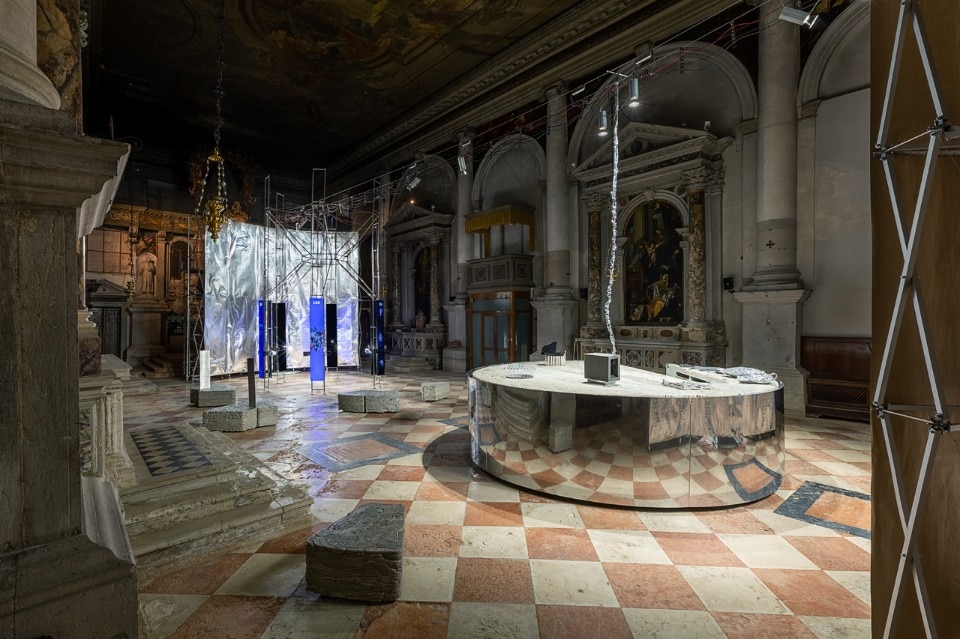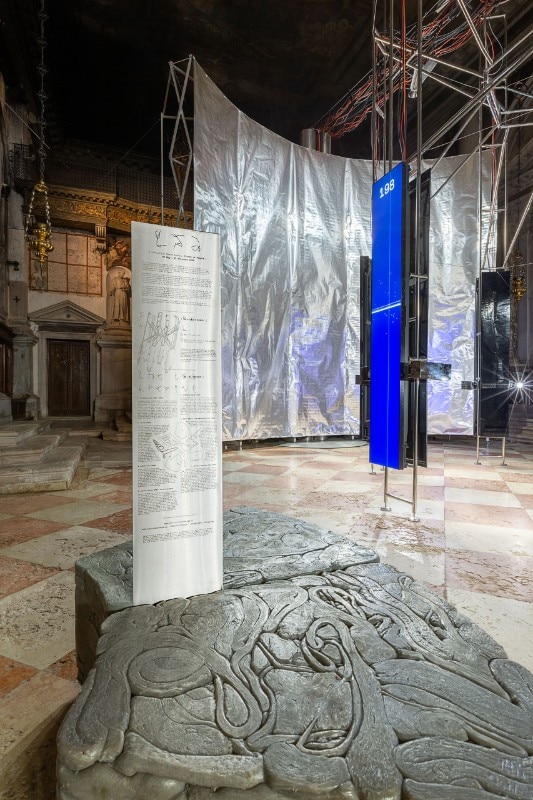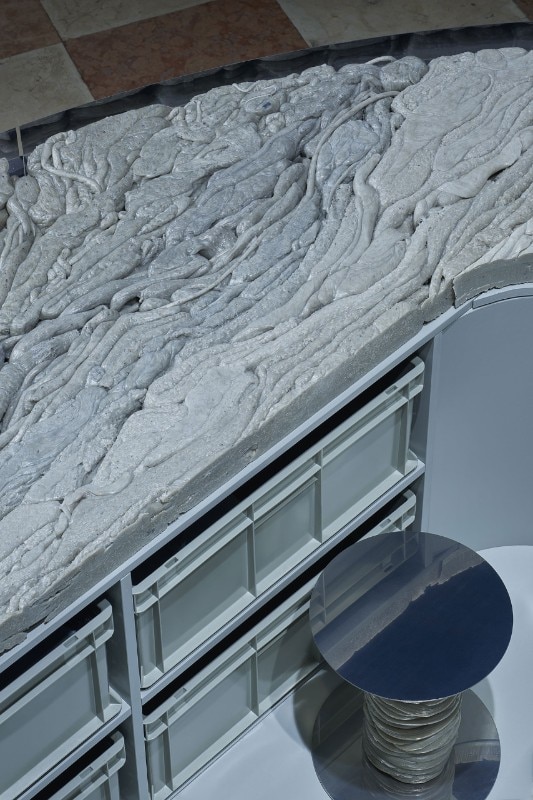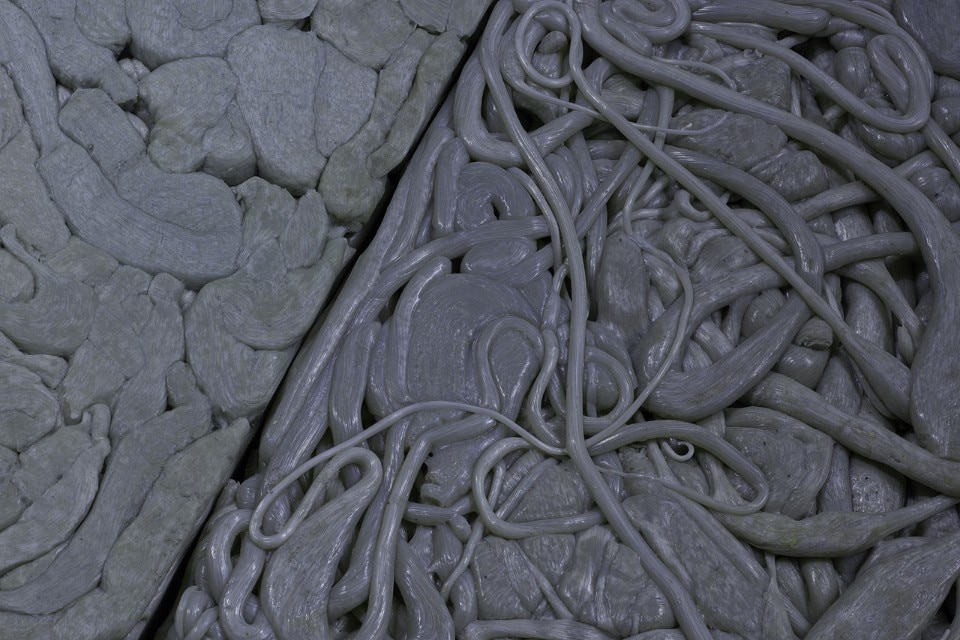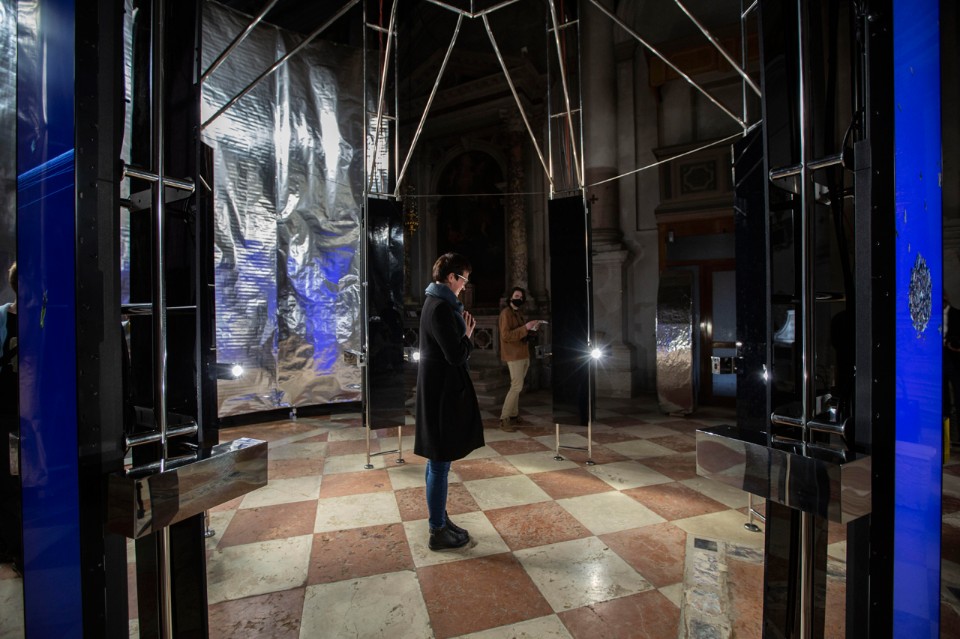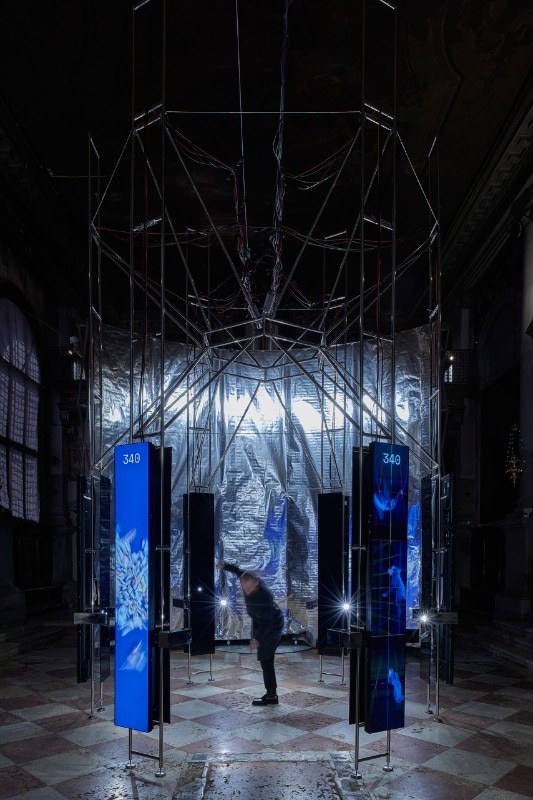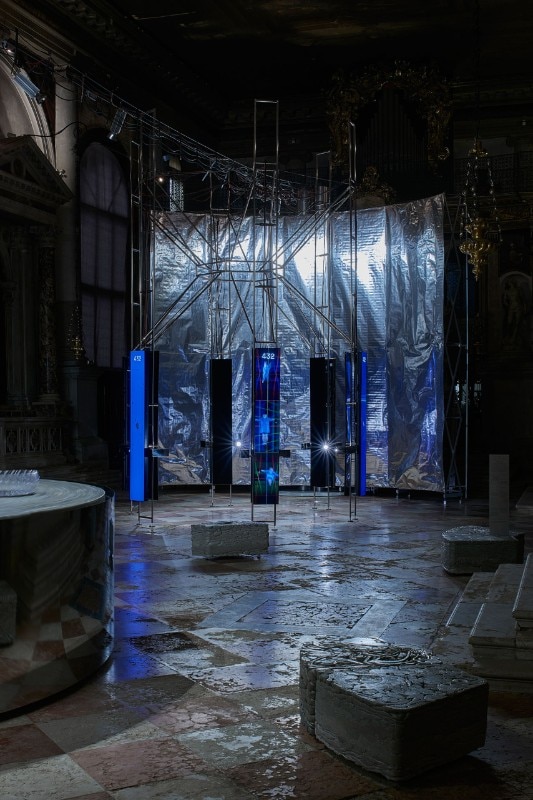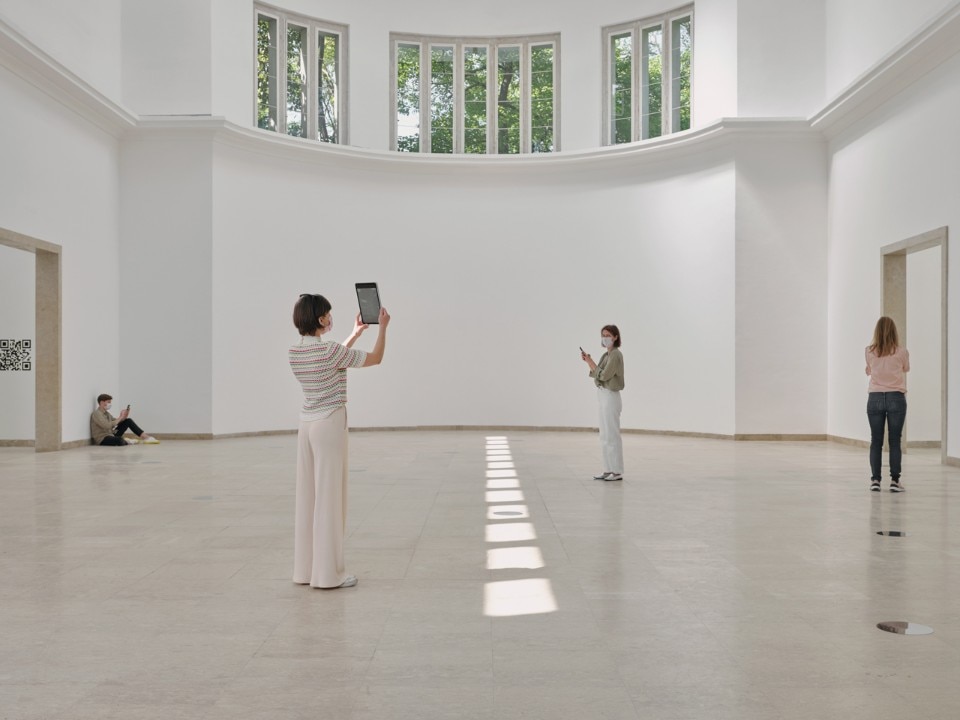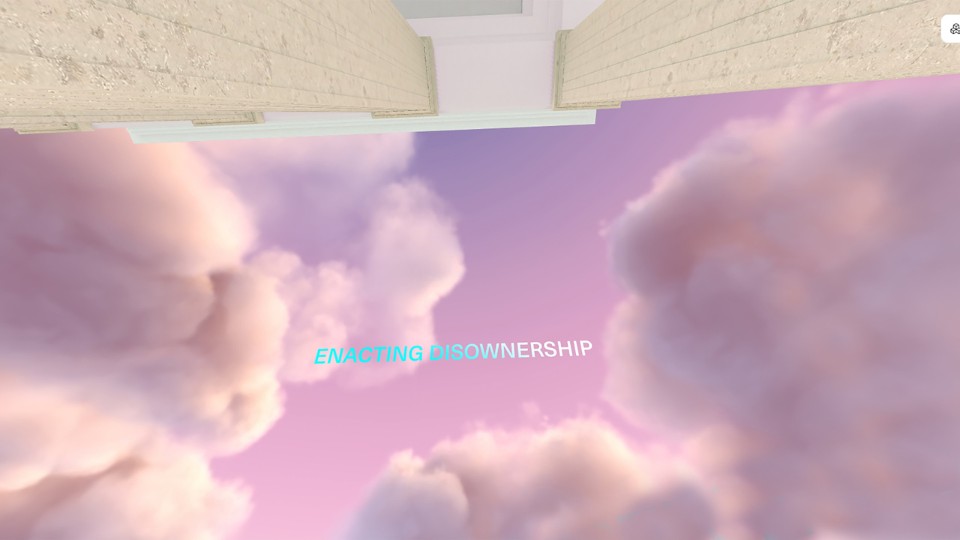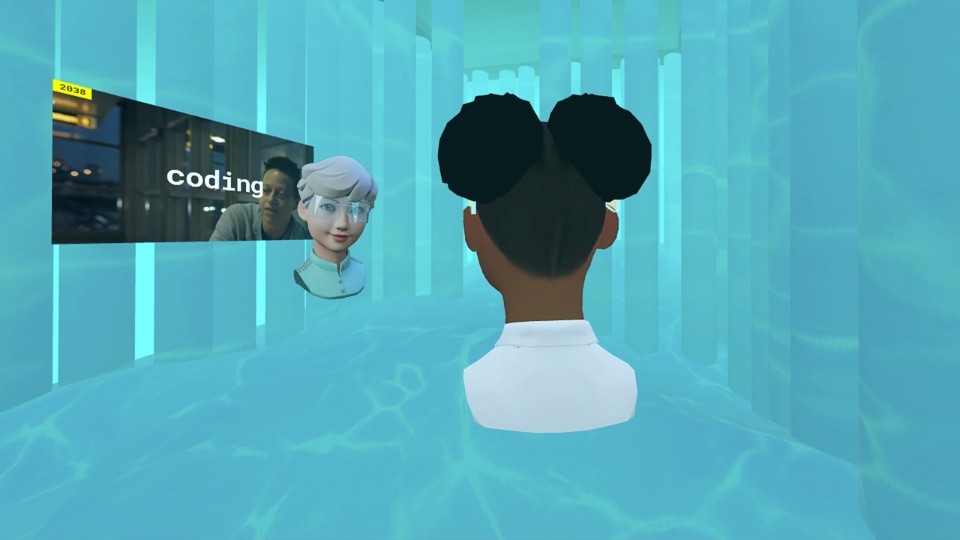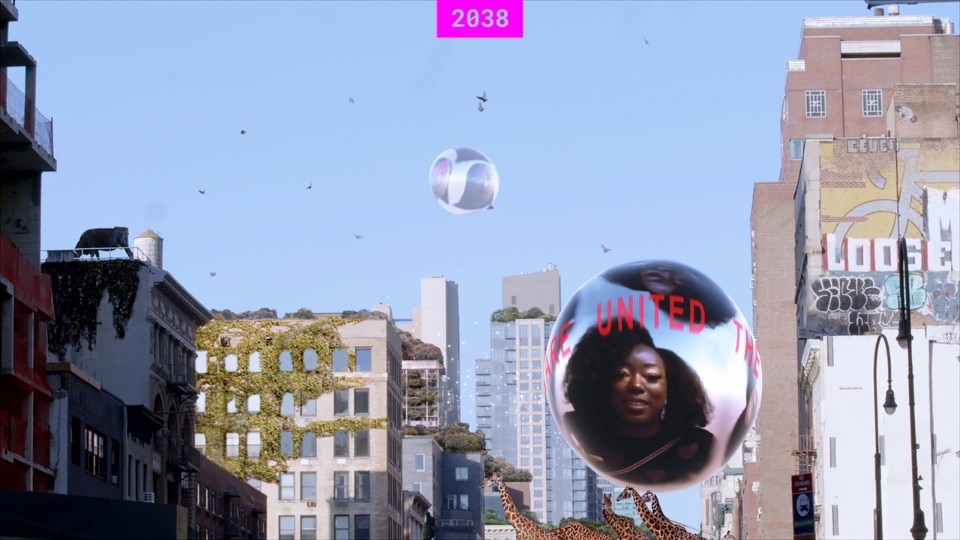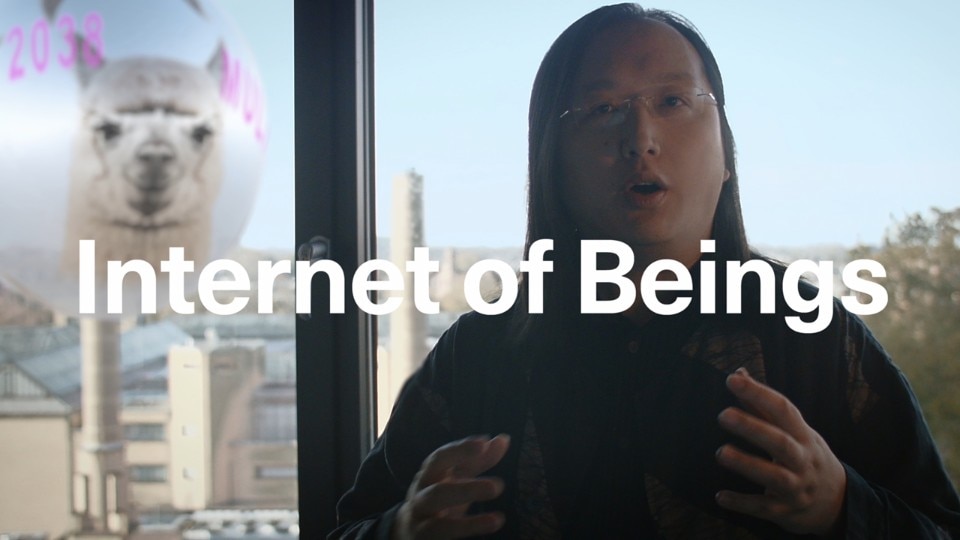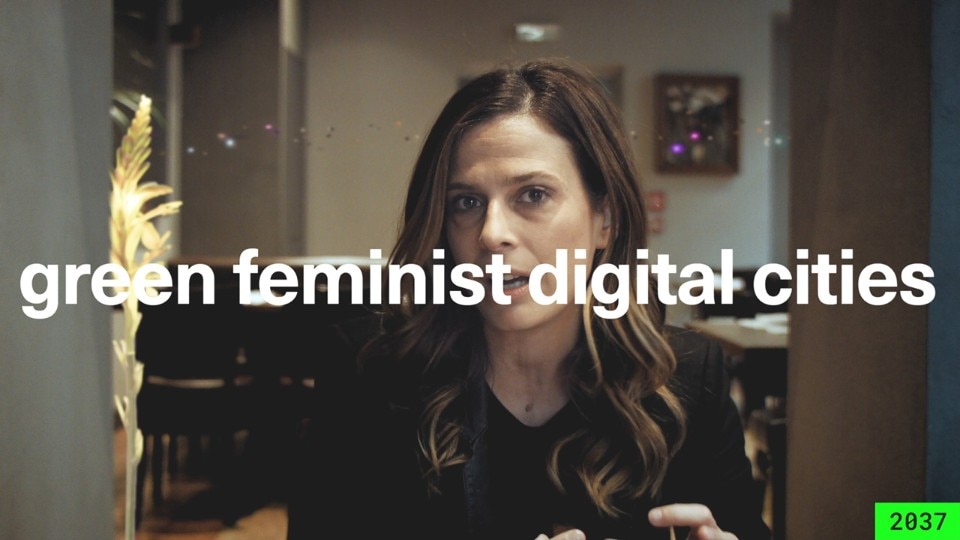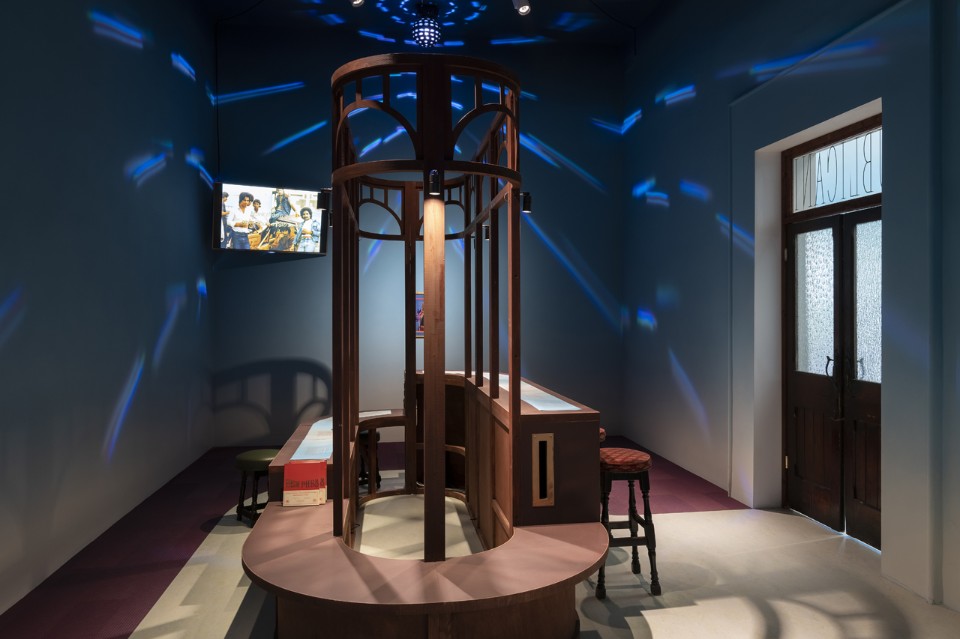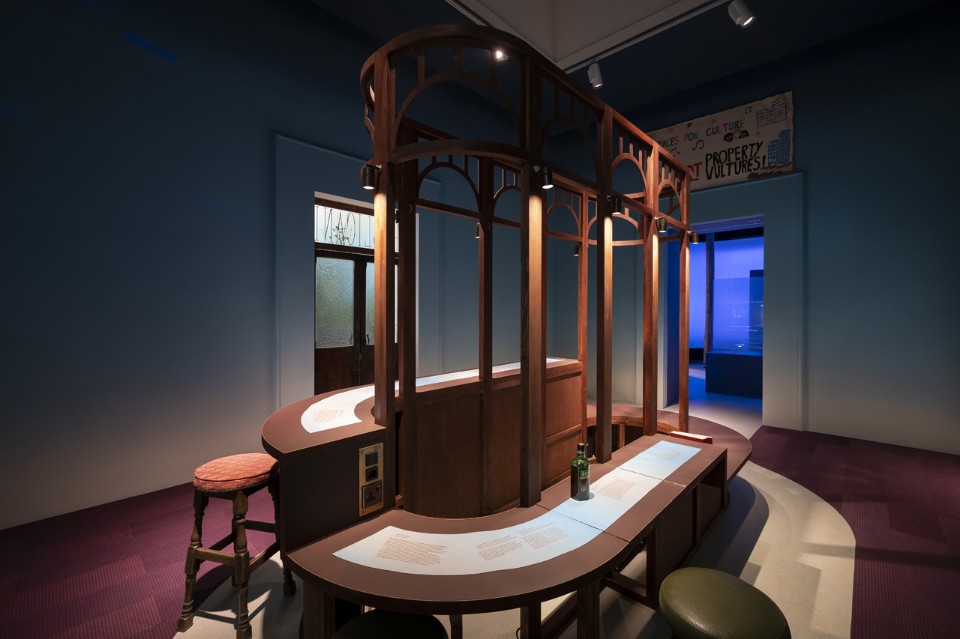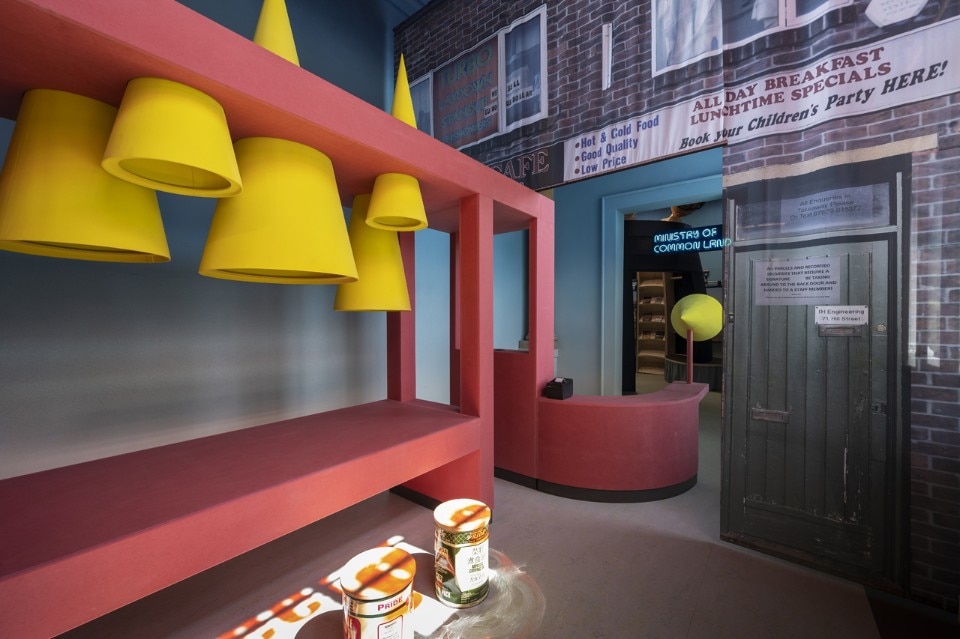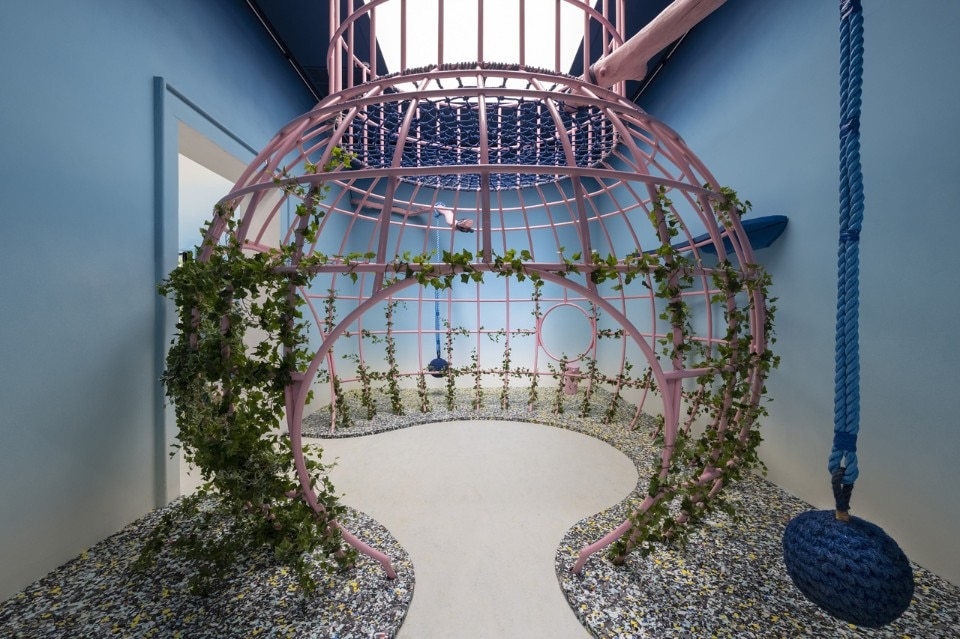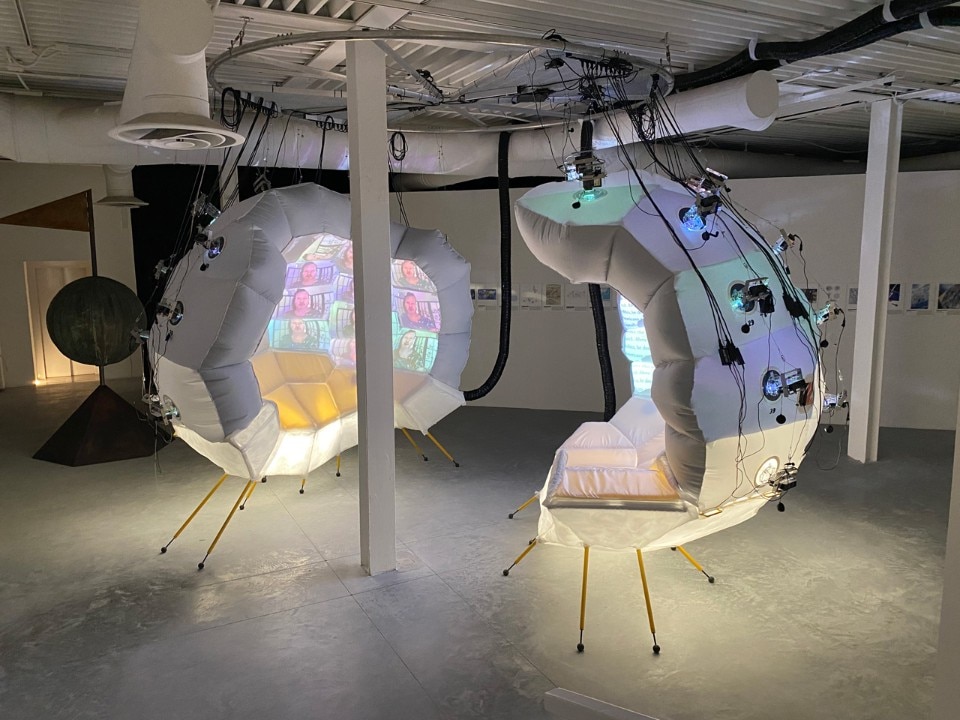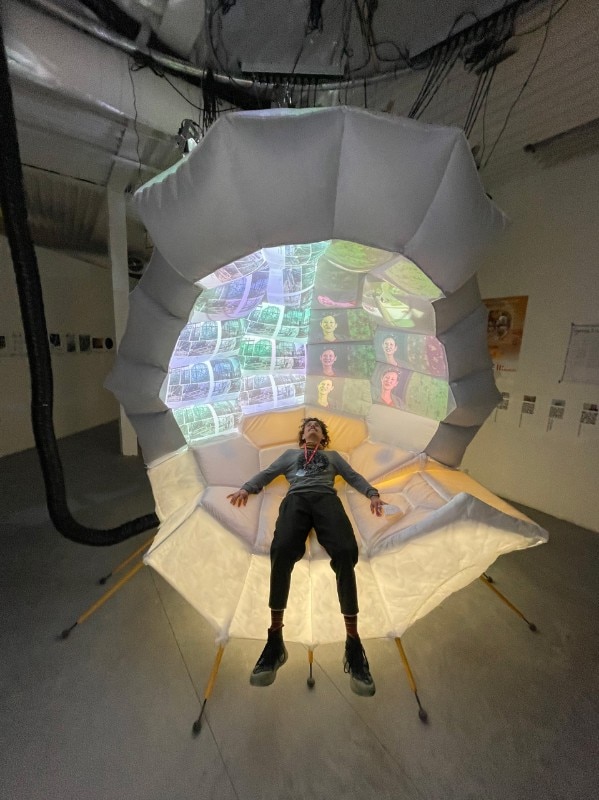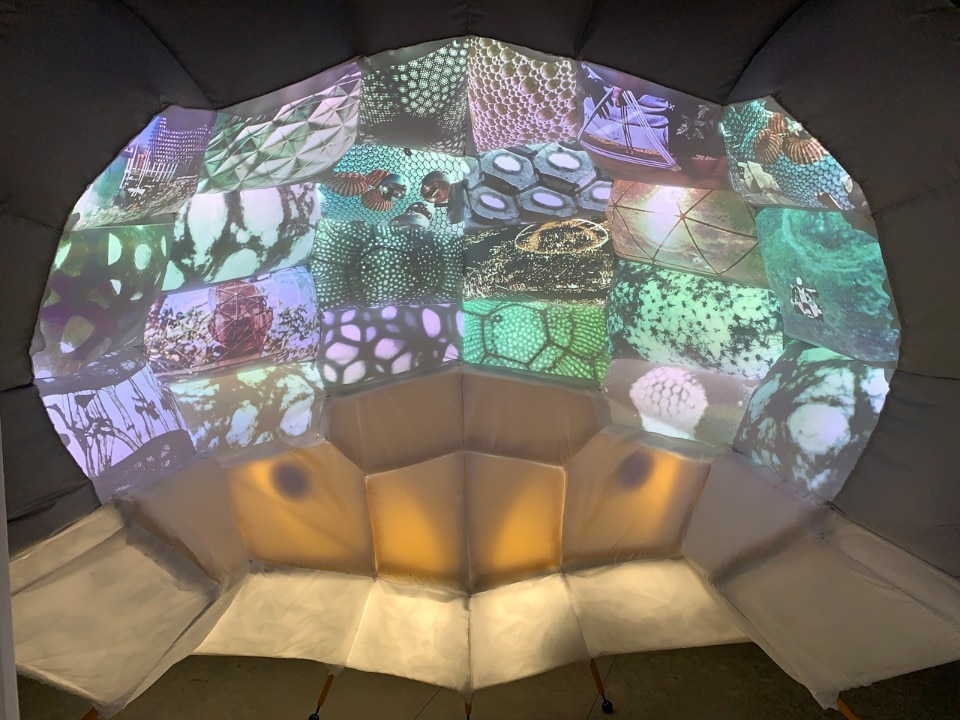While visiting the Central Pavilion at this year’s Biennale, I could not help but feel a certain traumatic feeling, as if nothing had actually ever changed in that place since the last time I entered, November 2018. Still, to live in 2021, to be — alas, no way to escape journalistic clichés — in the possible aftermath of a pandemic does not necessarily mean to be feeling some desperate thirst of what had been before: it might instead result in something like the feeling of being offered a tumbler full of gin, the day after a major hangover.
The careful clusterization and decodification of data, their sublimation through an (almost) always refined display, the Biennale language being spoken again and immediately, with in facts no admission of any chronological discontinuity, may leave us facing a hard time, in need of some break, at least in terms of communication.
Because it is of paramount importance and necessity, now more than ever, to have our usual vernissage chit-chat interrupted by the actions of Forensic Architecture and the thunders from Giulia Foscari + Unless’s Antarctic Resolution, constantly reminding that one of the few things to really survive the pandemic has been our predatory attitude towards our fellow humans and our habitat. But way less necessary is all other display of disciplinary pedantry left around, speaking the usual words of architectural exhibitions and apparently ignoring both what has changed and what has remained untouched.
In such a fragile and rushed urge for a general recovery, evocating that performance society spirit which at last is being widely called out and criticized in these recent times, spontaneous questions come up: do we actually need to live together? Or, at least, do we need some time to better understand, or some symbolic gesture to set a clear discontinuity within a discourse that might be in need of new priorities from now on?
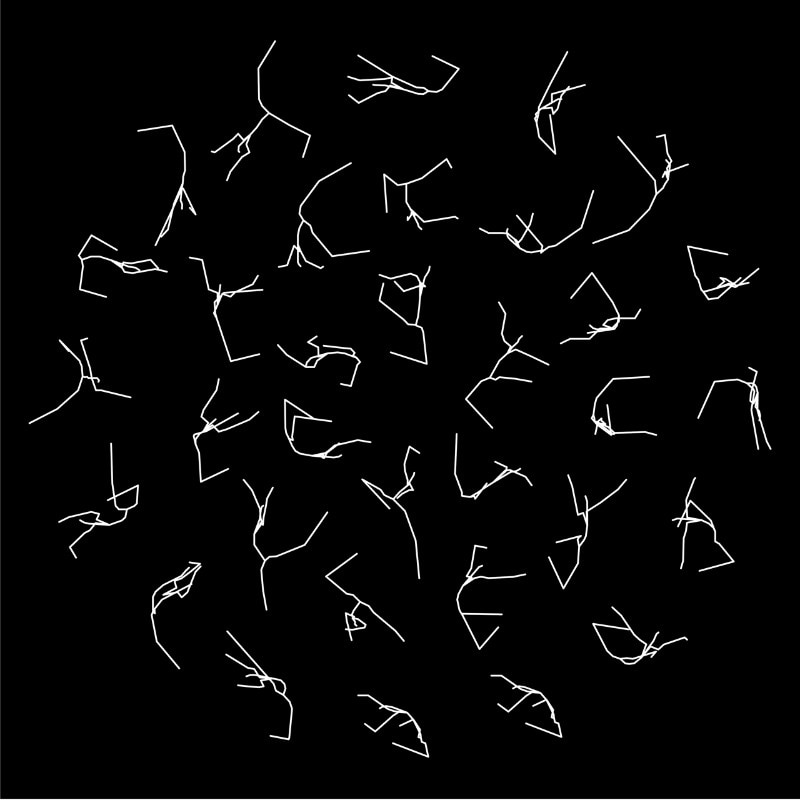
As we keep wondering what this gesture might actually be, we might both symbolically and physically escape the Biennale paddock, and step into the radical choice exploring other worlds, to experience some otherworldly explorations. In the eternal chicken-or-egg game firmly tying the Biennale topic to the content of National pavilions, this otherworldly seems to have appeared spontaneously to address the dilemmas we just evocated so far.
It starts from a planet we might like to join, the planet made of human bodies that Julijonas Urbonas is patiently building, scan after scan, inside the Venetian church of Santa Maria dei Derelitti, the Lithuanian National Pavilion. Urbonas is one of the founders of Lithuanian Space Agency, a project exploring gravitational aesthetics to shape a Third Space Age, welcoming the visitors inside a digital scenery crowded by 3D scanners and structures mad of an apparently indefinitely stranger material.
“I am interested in exploring altered states of gravity, where to test imagination and thinking” Julijonas Urbonas immediately told us, “this project is a thought experiment that invites you to a create a collection of human beings stripped off of all earthly labels, packed at close proximity for a substantial amount of time, a rethinking of human architecture. Imagine human beings with no earthly desires or needs. If we remove earthly issues, what is driving architecture? Vitruvian body was the center so far, it was a matter of anthropocentrism and gravity. But those two issues may disappear in outer space, so what is architecture with no gravity? what is architect in outer space? can it exist?”
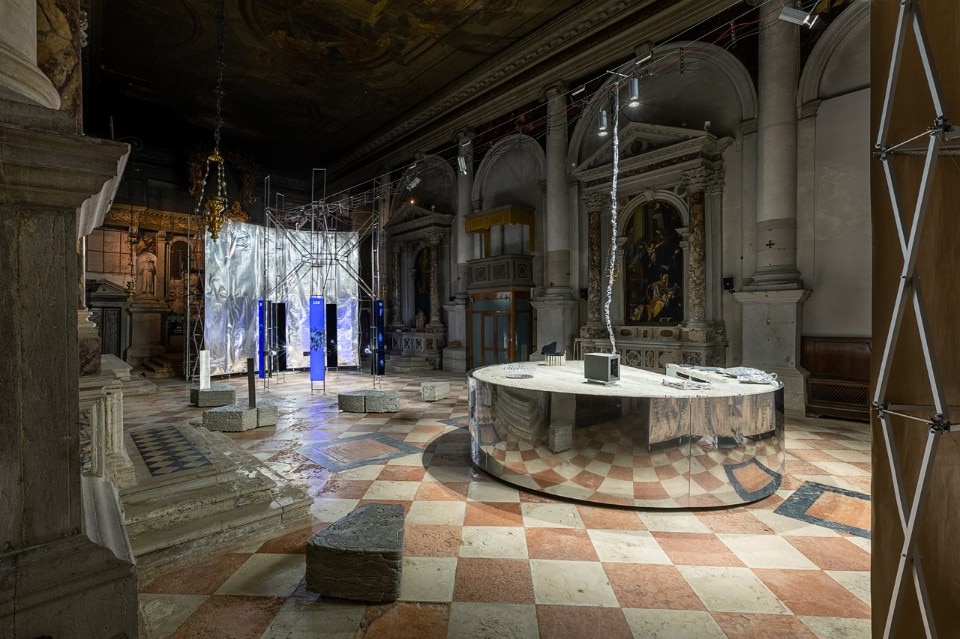
Quite a long research journey, but most of all a personal journey has led here.
“I grew up the son of the director of a small Soviet amusement park, and could experience amusement rides as a unique genre of art: no other kind of art has such a narrative effect on your body. It’s ego-motion, a state of you being moved, a unique way of experiencing aesthetics. While brainstorming for this Biennale project, by the way, we had also thought of a spinning lecture hall! I spent 11 years developing gravitational aesthetics, all different kinds of altered states of gravity: what is it like to live, shit , have sex, eat in other states of gravity.
Now, in this Second Space Age which is not only the time of space economics, but a proper astro-anthropocene, the awareness of our earthly origins is increased. Now is when people should think of their work in terms of fiction. You should try and rethink radically, at least temporarily, to detach yourself from your earthly origin: this was the core of the first annual report of Lithuanian Space Agency, this how the idea of a planet of people, made of human bodies, became the most discussed, and the one to survive.”
The reason why he chose to dive deep into such kind of not-only-intellectual shift appears increasingly clear. “The reason was a reaction to the shift in cosmic imagination as it is conceived in this Second Space Age, a specific term now colonized by USA and Russia. Feel this Zeitgeist of eschatological times: people get increasingly used to talk about apocalyptical ideas, and lift their heads to find good news from up there. Still, as you think of how future is imagined through space nowadays, it is colonized, privatized by certain countries and mostly by few people. It has become a thing for billionaires.”
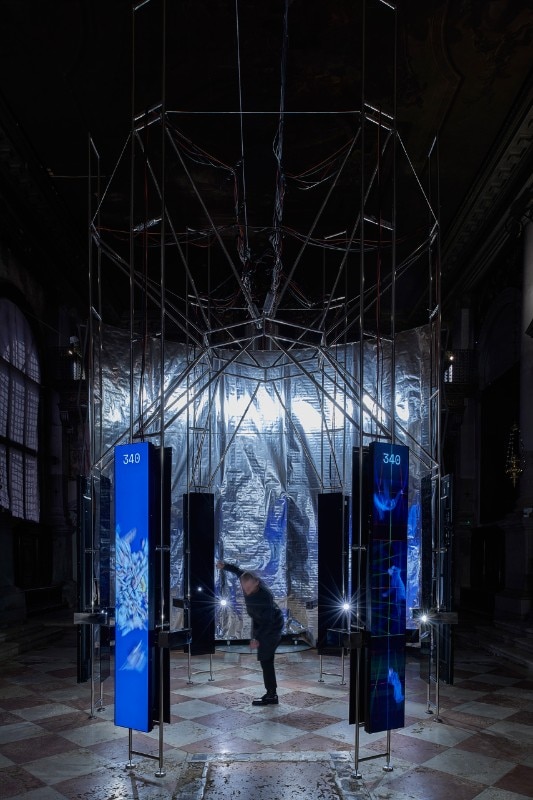
That openly becomes a matter of space politics.
“We started to look at this project from perspectives of space aesthetics, space politics and space ethics. astro-ethics.
The architecture we propose instead is not business-as-usual architecture translated to a state of levitation. Nowadays architecture is so down-to-earth, even in science fiction architecture is a mere application of earthly histories. Think of Jeff Bezos and co., paying renowned architectural firms to visualize their ideas of architecture in space, and even though they visualize it levitating, still economical political and social constructs are left earthbound. All in all, the picture comes out extremely egocentric: an American writer who came here some days ago said ‘Elon musk also sends pictures of his d*ck to everybody , this is what he is.’ A friend of hers was invited to a silicon-valley guys conference, asked to present fresh and radical ideas of future, got paid a fee like she could just reach in years as a professor. Only four people were at the table, and the only question was: ‘what if economy collapses, money is no longer the way to drive things. How can we find shelter, prevent ourselves from being invaded by the armies we built?’ All egocentrically about how to survive. That’s where this kind of visions are driving, everything privatized at all levels. It’s a broader picture but it sticks to architecture."
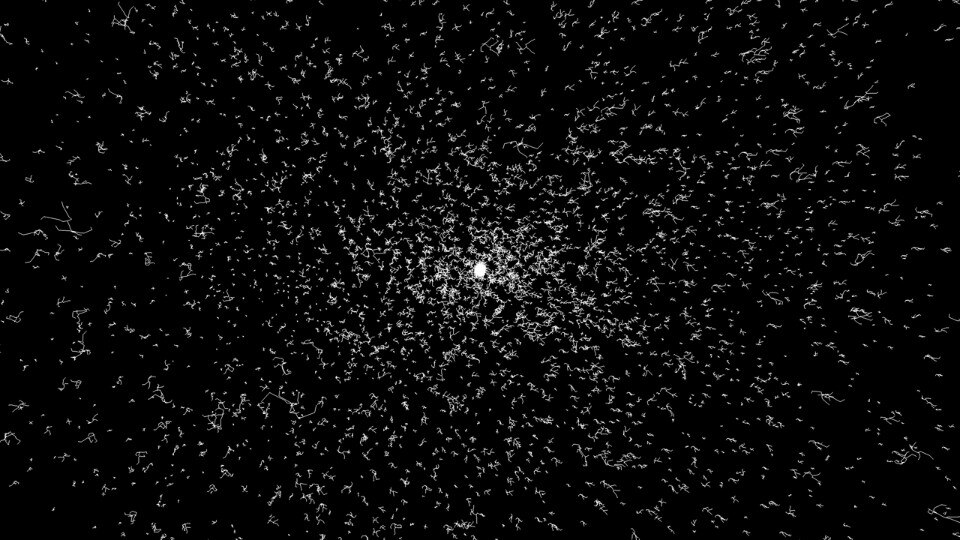
"So I start my work, my quest for a shift, by imagining set and choreography, organization of people, orientation of space and movement that has not existed yet. This should not be misinterpreted as a brain in a vat approach (like it used to be in environments such as Second Life and similar). My project is more of an extraterrestrial dancefloor. Here is how architecture can become poignantly interesting in terms of narrative: what if we had architecture as a genre of fiction? A participative, interactive fiction, an invitation to be co-architect, and join the Third Space Age, the one to shift radically towards a democratic direction, where all of a sudden everything is accessible to everybody. It’s already here, by the way, as space is not only above us, it’s part of us, we are part of a cosmic being.”
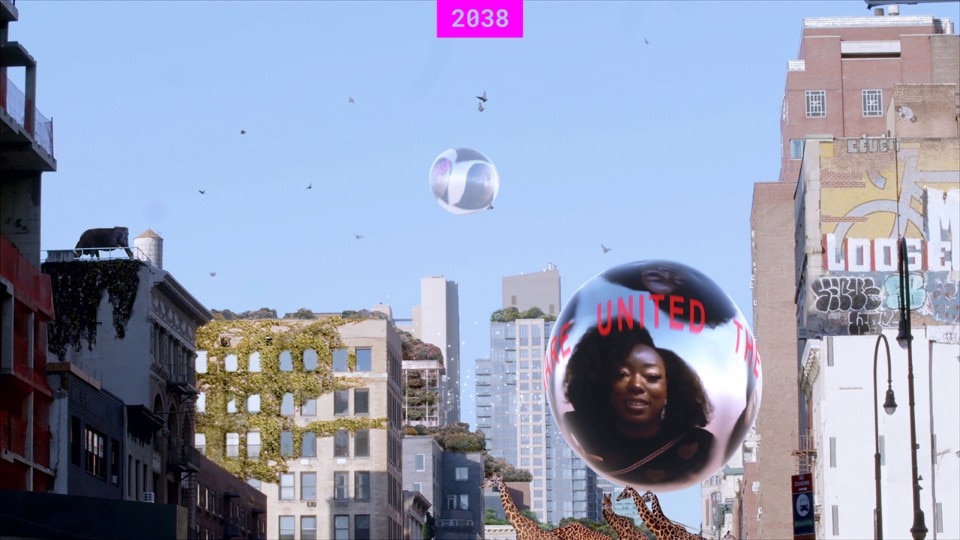
Implications are clearly deeper than in standard utopias, or earthly heterotopias, the role of human body itself is stripped out of its conventional features through a not-so-fictional operation, in the end; the body has a central role but unlike models such as Constantinos Doxiadis’s anthropokosmos, its potential is cosmic in terms of a higher and more inclusive scale of belonging.
Even the concept of a proper eutopia could completely fit the worlds we are exploring. Still, eutopia is in some way the key that that the German pavilion has chosen to discard the impasses of the usual scenario-making machines: 2038. The new serenity, curated by a team gathered by Arno Brandlhuber, Olaf Grawert, Nikolaus Hirsch and Christopher Roth, is an operation that wants to talk to us from a close future where “everything, though imperfect, is better in some pretty profound and radical ways”.
We suddenly move from architecture as a genre of fiction to the realm of prefigurative politics as a tool to set a purpose for projects and practices. Young travelers from 2038 as well as Audrey Tang, Francesca Bria, V. Mitch Mc Ewen and many others are talking to us from 2038, in films narrating those “strange little artifacts that could possibly trigger systemic change, telling story as contingent, complex and paradoxical — as it is” . Still, a fundamental detail roots us back into 2021: no longer a secret, 2038 lives almost completely online. The physical space of the pavilion is transferred to the virtual dimension: a covid-related solution that still makes a larger sense, as visiting the empty spaces of the German building in Venice, scanning the QR codes scattered on the walls, we have the chance to once more re-experience our here-and now dimension in a slight alteration of usual coordinates, the same way Tai-Chi operates on human body to reset our general balance.
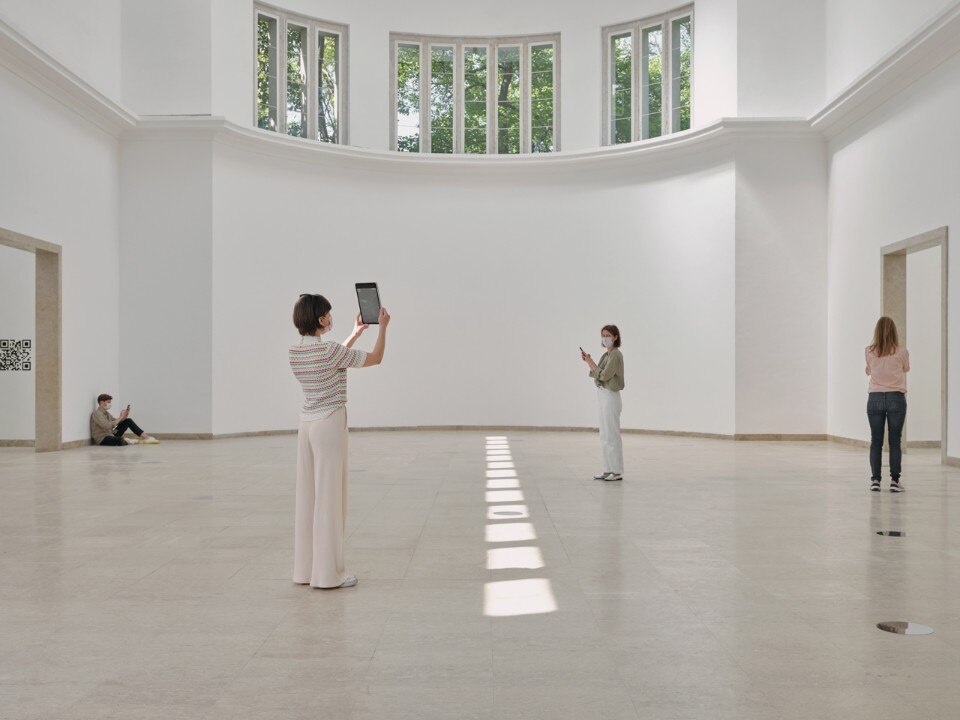
A few other worlds can be explored in the Venetian curatorial universe, How other and how close a pub can be, a private yet collective space, that all of a sudden we could start looking at for what it really is, a space for gathering and exchange, a potential time bomb of political activation, a public space in the end? This is another world as told by the British pavilion, The Garden of Privatised Delights, a reflection led by Madeleine Kessler, Manijeh Verghese and Unscene Architecture on the state of the art but most of all on the potential lying encased in the vast amount of public surface gradually appropriated by the private in contemporary times: a relationship we could perfectly envision to reverse to their very opposite. What used to be Stonewall Inn in New York after all, before it became the epicenter of a revolution in 1969? Apparently nothing more than a bar.
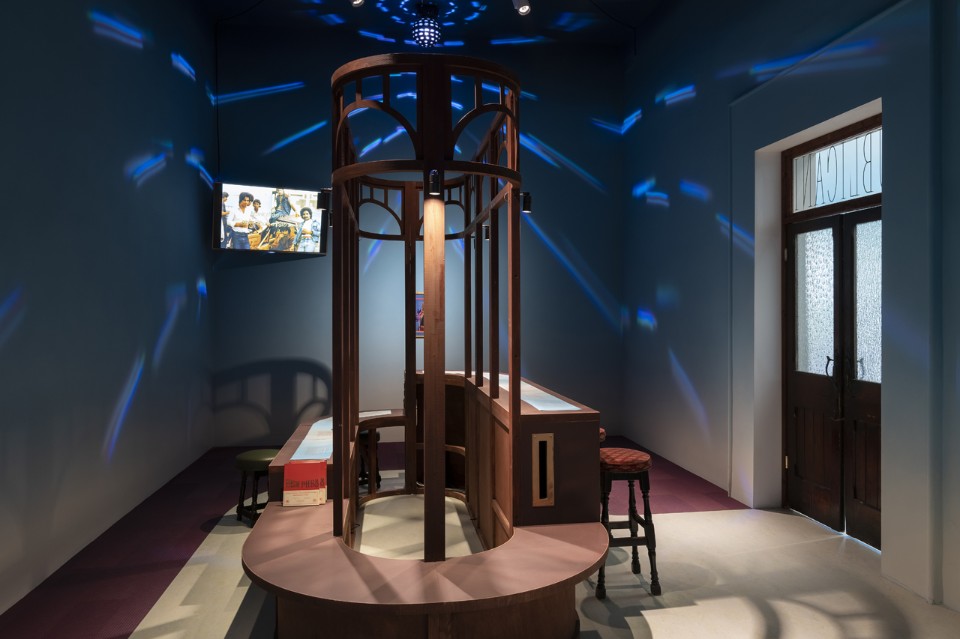
One last mention goes to a quite Twentieth-century and earthly approach, created nonetheless 60 years ago by the students of Richard Buckminster Fuller, to whom we owe much of our contemporary capacity to consider planet Earth in global or interconnected terms. Landing back in the Central Pavilion we moved from, Geoscope 2 re-created by Jesse Reiser with Princeton University and Daniel López-Pérez brings us back to sensorial capsules, space objects belonging to the First Space Age, still getting us diving into that mutual exchange betweenthe individual and the surrounding environment which is the very foundation of human habitat.
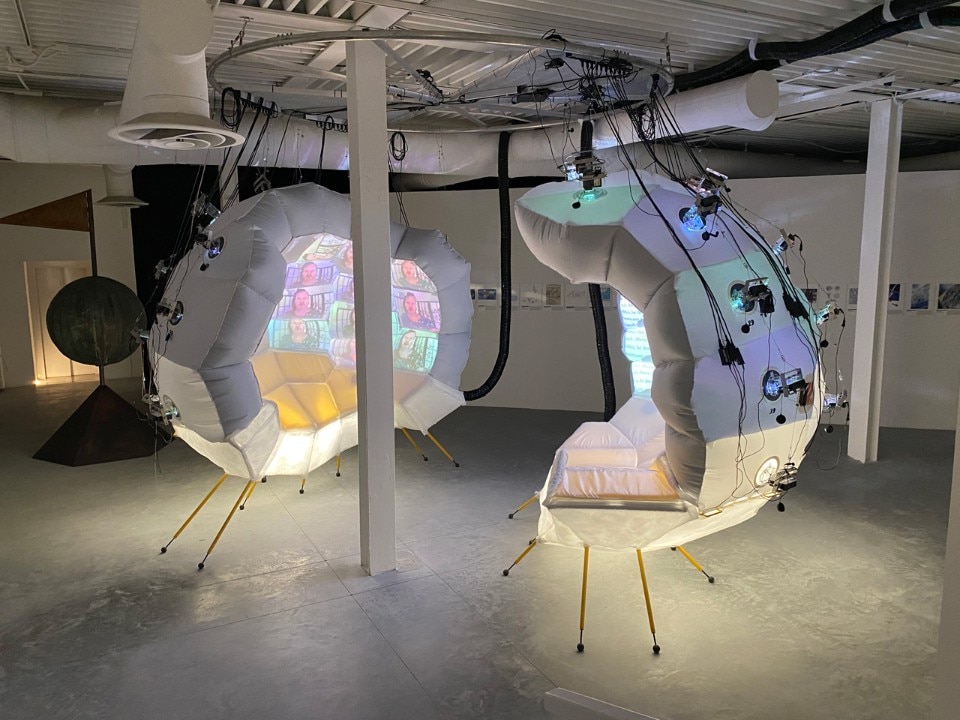
A time to stop and understand, different practices, different conventions: this might be the the moment we need all this the most. And there’s no need to immediately come out with some other manifesto — this would be just some other expression of our inner performance freak. This might be the time to look at ourselves through a new glass, and 2021 Biennale, in between the stormy waves of its usual over-informing flow, might be offering this opportunity.
